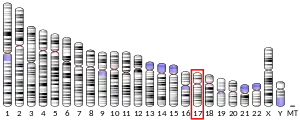| FBXW10 | |||||||||||||||||||||||||||||||||||||||||||||||||||
|---|---|---|---|---|---|---|---|---|---|---|---|---|---|---|---|---|---|---|---|---|---|---|---|---|---|---|---|---|---|---|---|---|---|---|---|---|---|---|---|---|---|---|---|---|---|---|---|---|---|---|---|
| Identifiers | |||||||||||||||||||||||||||||||||||||||||||||||||||
| Aliases | FBXW10, Fbw10, HREP, SM25H2, SM2SH2, F-box and WD repeat domain containing 10 | ||||||||||||||||||||||||||||||||||||||||||||||||||
| External IDs | OMIM: 611679 MGI: 3052463 HomoloGene: 32757 GeneCards: FBXW10 | ||||||||||||||||||||||||||||||||||||||||||||||||||
| |||||||||||||||||||||||||||||||||||||||||||||||||||
| |||||||||||||||||||||||||||||||||||||||||||||||||||
| |||||||||||||||||||||||||||||||||||||||||||||||||||
| |||||||||||||||||||||||||||||||||||||||||||||||||||
| |||||||||||||||||||||||||||||||||||||||||||||||||||
| Wikidata | |||||||||||||||||||||||||||||||||||||||||||||||||||
| |||||||||||||||||||||||||||||||||||||||||||||||||||
F-box/WD repeat-containing protein 10 is a protein that in humans is encoded by the FBXW10 gene.[5][6][7]
Members of the F-box protein family, such as FBXW10, are characterized by an approximately 40-amino acid F-box motif. SCF complexes, formed by SKP1 (MIM 601434), cullin (see CUL1; MIM 603034), and F-box proteins, act as protein-ubiquitin ligases. F-box proteins interact with SKP1 through the F box, and they interact with ubiquitination targets through other protein interaction domains (Jin et al., 2004).[supplied by OMIM][7] Increased expression of the gene has been associated with laminopathies, and in degradation of chromatin associated proteins such as HP1, ATR kinases (Chaturvedi and ParnaiK, 2010, PMID: 20498703).
References
- 1 2 3 GRCh38: Ensembl release 89: ENSG00000171931 - Ensembl, May 2017
- 1 2 3 GRCm38: Ensembl release 89: ENSMUSG00000090173 - Ensembl, May 2017
- ↑ "Human PubMed Reference:". National Center for Biotechnology Information, U.S. National Library of Medicine.
- ↑ "Mouse PubMed Reference:". National Center for Biotechnology Information, U.S. National Library of Medicine.
- ↑ Kennerson ML, Nassif NT, Nicholson GA (Dec 1998). "Genomic structure and physical mapping of C17orf1: a gene associated with the proximal element of the CMT1A-REP binary repeat". Genomics. 53 (1): 110–2. doi:10.1006/geno.1998.5453. PMID 9787083.
- ↑ Kennerson ML, Gordon MJ, Blair IP, Nicholson GA (Dec 1995). "Single test for two hereditary neuropathies, CMT1A and HNPP". Clin Chem. 41 (10): 1534–5. doi:10.1093/clinchem/41.10.1534. PMID 7586531.
- 1 2 "Entrez Gene: FBXW10 F-box and WD repeat domain containing 10".
Further reading
- Kimura K, Wakamatsu A, Suzuki Y, et al. (2006). "Diversification of transcriptional modulation: large-scale identification and characterization of putative alternative promoters of human genes". Genome Res. 16 (1): 55–65. doi:10.1101/gr.4039406. PMC 1356129. PMID 16344560.
- Jin J, Cardozo T, Lovering RC, et al. (2005). "Systematic analysis and nomenclature of mammalian F-box proteins". Genes Dev. 18 (21): 2573–80. doi:10.1101/gad.1255304. PMC 525538. PMID 15520277.
- Strausberg RL, Feingold EA, Grouse LH, et al. (2003). "Generation and initial analysis of more than 15,000 full-length human and mouse cDNA sequences". Proc. Natl. Acad. Sci. U.S.A. 99 (26): 16899–903. Bibcode:2002PNAS...9916899M. doi:10.1073/pnas.242603899. PMC 139241. PMID 12477932.
- Wiemann S, Weil B, Wellenreuther R, et al. (2001). "Toward a catalog of human genes and proteins: sequencing and analysis of 500 novel complete protein coding human cDNAs". Genome Res. 11 (3): 422–35. doi:10.1101/gr.GR1547R. PMC 311072. PMID 11230166.
This article is issued from Wikipedia. The text is licensed under Creative Commons - Attribution - Sharealike. Additional terms may apply for the media files.



